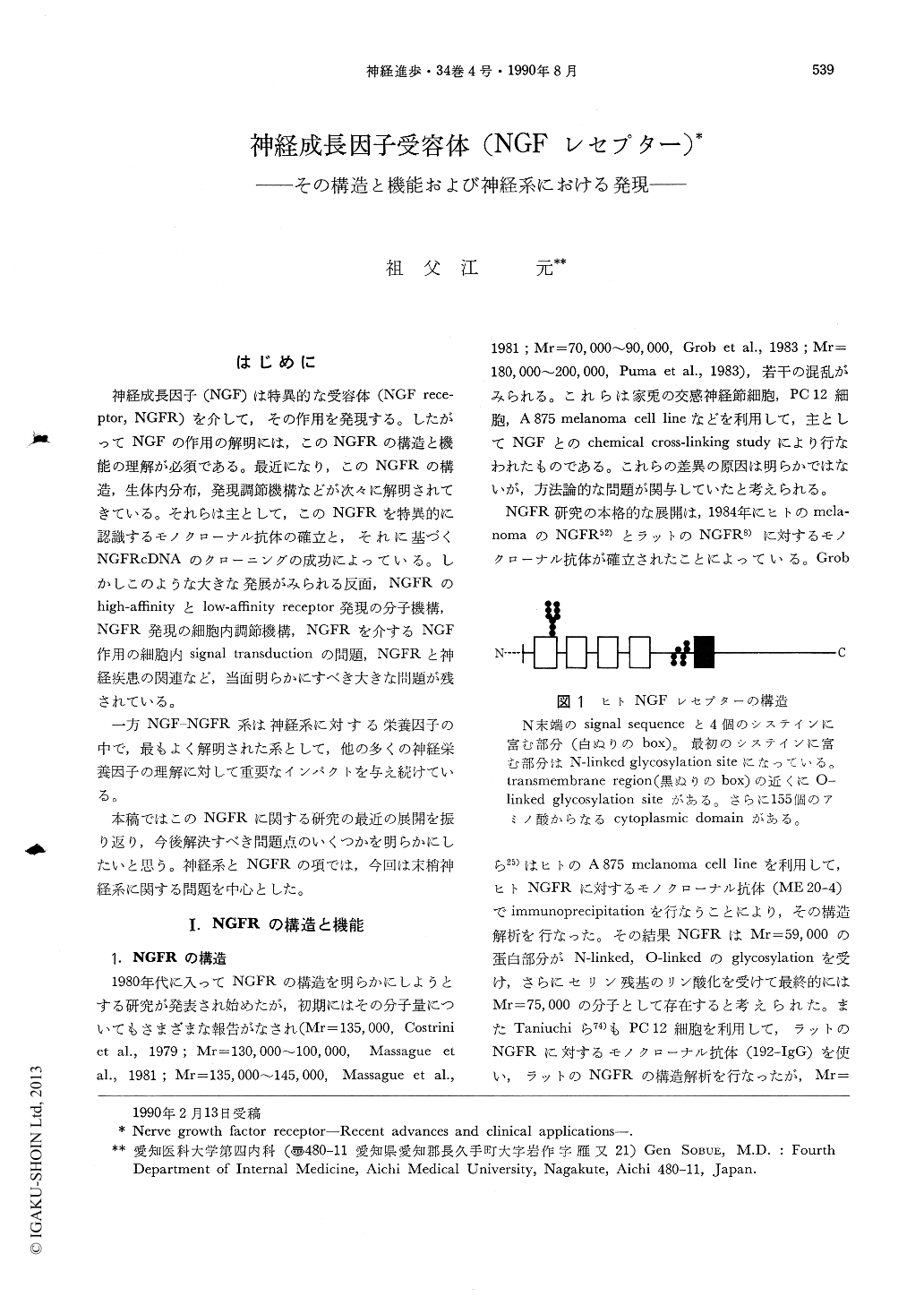Japanese
English
- 有料閲覧
- Abstract 文献概要
- 1ページ目 Look Inside
はじめに
神経成長因子(NGF)は特異的な受容体(NGF receptor,NGFR)を介して,その作用を発現する。したがってNGFの作用の解明には,このNGFRの構造と機能の理解が必須である。最近になり,このNGFRの構造,生体内分布,発現調節機構などが次々に解明されてきている。それらは主として,このNGFRを特異的に認識するモノクローナル抗体の確立と,それに基づくNGFRcDNAのクローニングの成功によっている。しかしこのような大きな発展がみられる反面,NGFRのhigh-affinityとlow-affinity receptor発現の分子機構,NGFR発現の細胞内調節機構,NGFRを介するNGF作用の細胞内signal transductionの問題,NGFRと神経疾患の関連など,当面明らかにすべき大きな問題が残されている。
一方NGF-NGFR系は神経系に対する栄養因子の中で,最もよく解明された系として,他の多くの神経栄養因子の理解に対して重要なインパクトを与え続けている。
Recent advances in the study of nerve growth factor receptor (NGFR) were reviewed.
In the first section, I reviewed the recent findings on the structure and function of NGFR. Recent advances in this field were due to the establishment of monoclonal antibodies specific to rat or human NGFR, and cloning of cDNA encoding rat and human NGFR. The molecular structures of rat and human NGFR were highly homologous, but they both lacked endogenous protein kinase activity, as observed in the receptors for other trophic factors: IGF, EGF and PDGF. The gene for the human melanoma NGFR contains about 23 Kb of genetic information at six exons. It is located on human chromosome 17 at band q 21, and encodes a 3.8 Kb mRNA. One of the major problems in NGFR function is the molecular mechanism by which high- and low-affinity receptors are expressed. Accessory molecules are currently speculated to be required for the expression of high-affinity binding sites as in the case of IL-2 receptor. The mechanism of intracellular signal transduction for the NGFR is still obscure, but is related to the oncogene expression, and various protein kinases. Recent evidence suggests that protein kinase C and protein kinase N have a key role in the divergent pathways of the signal transduction for the NGFR.

Copyright © 1990, Igaku-Shoin Ltd. All rights reserved.


